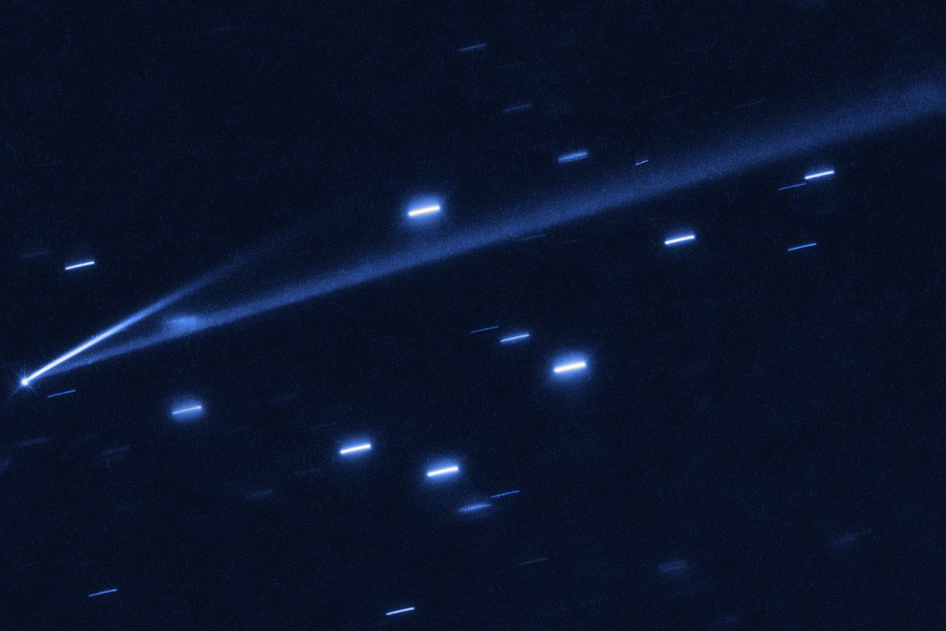Subject: A Hubble Space Telescope discovery of a mysterious asteroid that is shifting in color from red to blue. - Comments and suggestions are welcome! Don't hesitate and leave a comment on our comment section down below the article!
By Universal-Sci
The asteroid in question, also known as 6478 Gault, as seen from the Hubble Space Telescope - Image Credits: NASA, ESA, K. Meech and J. Kleyna, O. Hainaut
In December 2018 astronomers discovered a striking asteroid in between the orbits of Jupiter and Mars. The most remarkable aspect about it (back then) was its unique double tail, which is very uncommon for asteroids.
However, in a new study, researchers have discovered another remarkable thing about 6478 Gault. It turns out that the asteroid is losing its red color and is swiftly turning blue. It is the first time ever that scientists have seen a planetoid change color in front of their eyes.
We usually only see tails trailing behind comets. A comet tail visible when it is illuminated by the Sun, and may become apparent from Earth when it passes through the inner Solar System. While a comet advances towards the inner Solar System, solar radiation causes the unstable materials within the comet to vaporize and stream out of the center. But it has been confirmed that 6478 Gault is rocky (while comets are mainly ice), which means that we are looking at completely different workings.
An animation of a comet advancing towards the inner solar system, ejecting particles generating an elongated tail - Image Credit: NASA/JPL-Caltech
As far as Michael Masset (one of the researchers that are studying this asteroid) knows, it has been the first time we ever observed a rocky body emitting dust in a similar way to a comet. He also stated that out of, approximately, one million bodies between Jupiter and Mars, there might only be 20 that are active in the asteroid belt.
The researchers think that the color change is happening due to the same type of mechanism that is responsible for a comet's tail. The asteroid is probably spinning so fast that layers of dust are ejected through the centrifugal force that it produces.
As we are looking at a very rare phenomenon, astronomers are keen on further investigating this extraordinary space rock. We will keep you updated in case any further discoveries are made.
Sources and further reading: MIT press release / Study: Megan E. Schwamb et al. Col-OSSOS: The Colors of the Outer Solar System Origins Survey, The Astrophysical Journal Supplement Series (2019) / comets
If you enjoy our selection of content please consider following Universal-Sci on social media:











